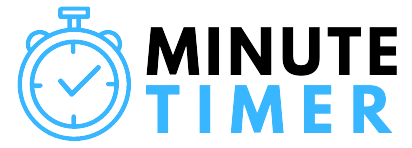
Deep work refers to the practice of immersing oneself completely in a task, channeling focused effort and concentration to achieve high-quality output. It’s a method that shuns multi-tasking, fostering an environment where one can delve into the core of complex tasks with undivided attention.
In the realm of deep work, a timer can be a potent ally. It aids in structuring work sessions, allowing individuals to dedicate chunks of time to intense focus, followed by periods of rest. This rhythmic pattern not only enhances productivity but also preserves the quality of work, nurturing a habit of meaningful and effective work engagements.
Preparing Your Environment for Deep Work
Identifying and Eliminating Distractions
In the pursuit of deep work, the first crucial step is to pinpoint and remove potential distractions that can fracture your concentration. In today’s interconnected world, distractions can stem from various sources including social media notifications, incessant emails, or even noise from your surroundings. It is essential to cultivate an awareness of these distractions and take proactive measures to minimize them. This could involve setting specific ‘technology-free’ periods, utilizing apps that block distractions, or creating a personal pact to avoid checking your phone constantly. Moreover, informing family members or housemates about your deep work sessions can further aid in maintaining a focused environment.
Setting Up a Dedicated Workspace
A conducive workspace is a cornerstone of deep work. Creating a dedicated workspace, where you can work undisturbed, fosters a mental state that is primed for deep concentration. This space should be equipped with all the necessary resources and tools, thereby preventing the need to break your focus and leave the space frequently. Ergonomic furniture, appropriate lighting, and a quiet atmosphere can enhance your ability to immerse deeply in your tasks.
Furthermore, personalizing your workspace with elements that stimulate your mind, such as plants, art, or calming colors, can foster a nurturing environment conducive to deep work. It’s also beneficial to keep this space neat and organized, as a clutter-free environment can subconsciously promote clarity of thought and focused work sessions.
Thus, preparing your environment for deep work involves a two-pronged approach: eliminating distractions and establishing a dedicated workspace that encourages sustained focus and productivity. By investing time and effort into creating such an environment, you lay a solid foundation for a successful journey into the realms of deep work.
Strategies for Deep Work
Utilizing the Timer to Segment Work Phases
Embracing deep work often requires a structured approach, and this is where utilizing a timer to segment work phases can be incredibly beneficial. Segmenting your work into distinct phases allows you to concentrate intensely on one aspect of the task at a time, enhancing the depth and quality of your work. A timer can facilitate this by helping you allocate specific time blocks for different phases, such as research, brainstorming, and actual execution. This method, often referred to as time-blocking, can prevent task overlap and promote a focused approach, where your attention isn’t scattered across various tasks. Moreover, setting a timer encourages adherence to the allocated time, fostering a sense of urgency and preventing procrastination.
Techniques for Maintaining Deep Focus
Maintaining deep focus over extended periods can be challenging. However, several techniques can aid in sustaining this focus. First, it is crucial to start with clear objectives, defining what you intend to achieve during each work segment. This clarity of purpose can steer your focus steadfastly towards your goals.
Additionally, practicing mindfulness can enhance your ability to maintain deep focus. Mindfulness techniques, such as meditation, can train your brain to resist distractions and stay engrossed in the task at hand. It’s also beneficial to incorporate regular breaks into your work routine, allowing moments of respite to rejuvenate your mind, readying it for subsequent intense focus sessions.
Furthermore, fostering a growth mindset, where you continually seek to improve your focus abilities, can be instrumental. This involves being open to learning and adapting, continually fine-tuning your strategies to find what best facilitates your deep focus.
In conclusion, cultivating deep work is a skill that involves strategic planning and sustained efforts. By utilizing a timer to segment work phases and employing effective techniques to maintain focus, you can gradually build a work ethic characterized by depth, efficiency, and productivity.
Implementing the Timer Tool
Setting Up Your Timer for Optimal Focus
To truly harness the power of deep work, the correct implementation of a timer tool is vital. Setting up your timer for optimal focus involves determining the right length for your work sessions and breaks. Initially, you might experiment with different durations to find the balance that best suits your personal rhythm. Typically, sessions lasting for 25 to 50 minutes, followed by a 5 to 10-minute break, work well for most individuals.
During these work sessions, your goal should be to immerse yourself completely in the task, fostering a tunnel vision where all that exists is the work in front of you. Utilize the timer to detach from the concept of clock time and instead, enter a state of flow where you are guided by the task at hand, not by the ticking clock.
Tips and Tricks for Maximizing Timer Efficiency
To maximize the efficiency of the timer tool, consider the following tips and tricks:
- Prioritize Tasks: Before initiating a work session, clearly delineate the tasks to be tackled. This helps in preventing aimless drifting and maintaining a clear focus.
- Eliminate Distractions: Ensure that your work environment is devoid of potential distractions, enabling you to utilize the work session to its full potential.
- Utilize Breaks Wisely: Use the breaks to truly disconnect, engaging in activities that rejuvenate you, be it a quick walk, stretching, or simply enjoying a cup of tea.
- Adjust Based on Feedback: Regularly assess the effectiveness of your current timer setup, and be willing to make adjustments based on your experiences.
- Incorporate Longer Breaks: After a few cycles of work sessions and short breaks, incorporate a longer break to prevent burnout and maintain a high level of productivity throughout the day.
Through the conscientious implementation of a timer tool, complemented with strategies to maximize its efficiency, you pave the way for a work environment where focus, productivity, and quality are the hallmark. This journey towards deep work is characterized by continuous learning and adjustments, fostering a dynamic yet structured approach to achieving your goals.
Conclusion
Recap: The Benefits of a Timer-Assisted Deep Work Practice
In reflection, adopting a timer-assisted deep work practice can significantly augment your focus and productivity. This structured approach enables you to carve out dedicated time slots where you can immerse yourself in complex tasks without the continual interruptions that characterize the modern work environment. The use of a timer aids in fostering discipline, helping you stick to predefined work periods and allowing for regular breaks to refresh your mind.
Furthermore, this practice has the potential to enhance the quality of your output. When you are deeply engrossed in a task, you are able to explore ideas more thoroughly and forge connections that might not be apparent in a state of fragmented attention. This often results in innovative solutions and high-quality output. Additionally, the enhanced focus can lead to quicker completion of tasks, freeing up time that can be spent on other pursuits or simply for relaxation.
Your Action Plan: Steps to Cultivate Deep Work Using a Timer
As you venture into cultivating a deep work practice with the aid of a timer, here is a concise action plan to guide you:
- Analyze Your Current Routine: Identify your most productive hours and schedule deep work sessions during these periods.
- Set Clear Objectives: Before each session, clearly outline the goals you aim to achieve, keeping them realistic and attainable.
- Choose the Right Timer Tool: Select a timer tool that suits your preferences, be it a digital tool or a traditional timer.
- Experiment with Time Blocks: Start with varying lengths for work sessions and breaks, fine-tuning as you understand what works best for you.
- Evaluate and Adjust: After a few cycles, evaluate the effectiveness of your approach and make necessary adjustments based on your experiences.
- Seek Continuous Improvement: As you progress, continually strive to enhance your deep work practice, learning from each session and aspiring to reach greater heights of focus and productivity.
Embarking on this journey to cultivate deep work using a timer is a step towards a more fulfilling and productive work life. It’s a commitment to excellence, where you seek not only to accomplish tasks but to delve deeper, exploring the nuances and fostering a rich understanding of your chosen endeavors.
